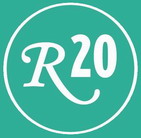
 Service Oriented Architectures
Service Oriented Architectures
Introduction
High on the agenda of many organisations is the integration of their vast number of isolated information systems. Many integration technologies have been introduced in the last decennium. The technology for the coming era is based on XML, (web)services, and other standards: the Service Oriented Architecture (SOA). SOA will become the backbone of many IT departments and with that it will become the information backbone of organisations themselves. All information exchange will pass through this architecture.
Due to mergers, new regulations and market changes, companies are looking at what SOA could mean for them. For some, SOA will be the basis for the automation of business processes. Others see it as a means to gradually remove their legacy systems, and others see it as a means to transform their organisation into an agile organisation - one that can adapt quicker to market changes and opportunities.
This one-day seminar presents an in-depth overview of the products and the technologies that are available today to develop SOA. The main product for implementing SOA is the Enterprise Service Bus (ESB). This new generation of products is based on widely adopted standards such as XML and SOAP and comprises most of the technologies needed for SOA including a BPEL engine, adaptors, content based routers and business rules engines.
Learning Objectives
-
Learn how an organisation could benefit from SOA
-
Learn how different technologies are needed to develop SOA
-
Understand what the differences are between SOA-related technologies and other older integrations solutions
-
Learn how an Enterprise Service Bus speeds up the development of SOA
Subjects
Introduction to Services and SOA
Invoking Services
Orchestration of Services
The Enterprise Services Bus - a new Generation of Integration Products
SOA Governance
SOA and Business Intelligence
Summary and conclusions
|
Copyright (c) 2016 R20/Consultancy B.V.. All rights reserved.






